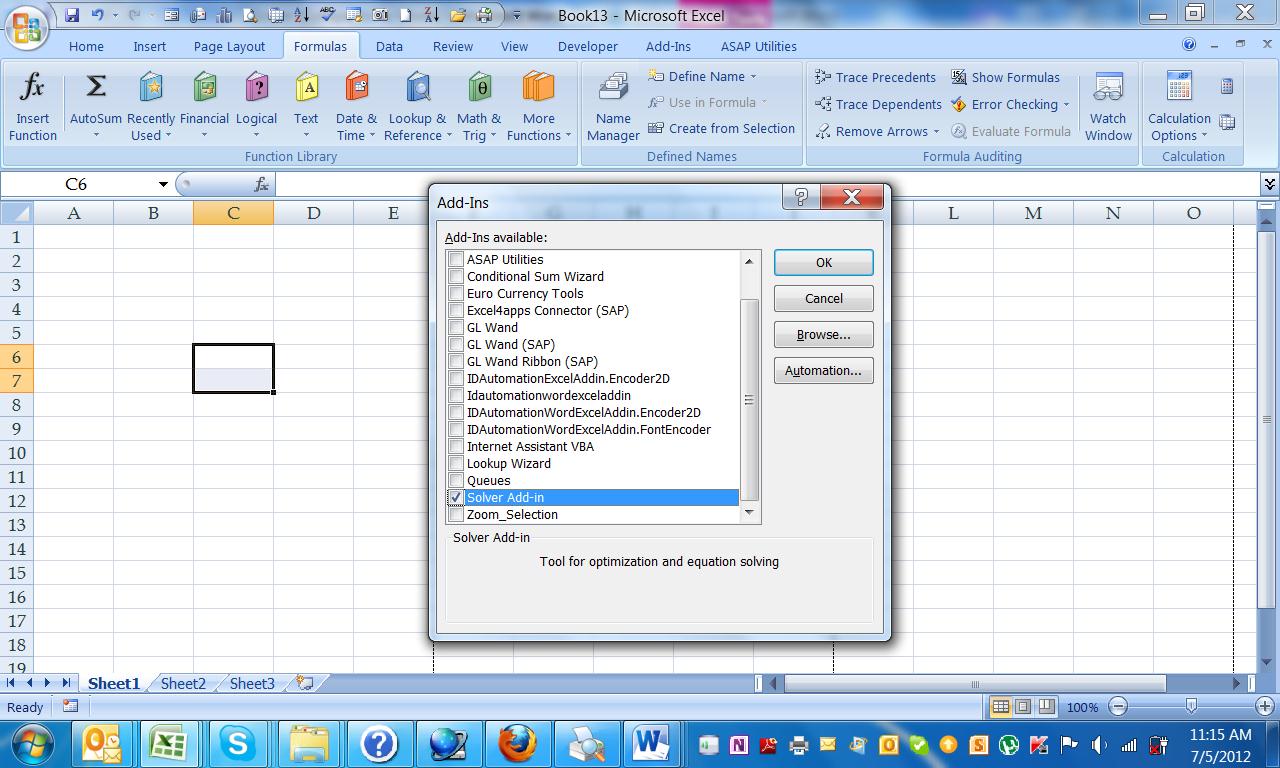
If the tabulated values are arranged horizontally, row and column are switched in the OFFSET function. This gives us a cell array reference 2 cells high and 1 cell wide. If the tabulated values are arranged vertically, the row_offset is the result from the MATCH function less 1 and row_count is 2 column_offset is 0 and column_count is 1. To obtain the known_y_pair range, the reference is set to the table of KnownYvalues for the known_x_pair range, reference is set to the array of KnownX values. It takes a starting point, the reference, and creates a cell reference with the given offset and size. Its syntax is OFFSET( reference, row_offset, column_offset, row_count, column_count). To formulate this linear programming model, answer the following three questions. The model we are going to solve looks as follows in Excel. You can find the Solver on the Data tab, in the Analyze group.

So, the OFFSET function is used twice to create these ranges. Under Add-ins, select Solver Add-in and click on the Go button. The MATCH function returns an index, but the FORECAST function requires two cell ranges: one for the known_x_pair and one for the known_y_pair. So, lookup_value is the value to interpolate, lookup_table is the array of KnownX values, and match_type is 1 to find the largest value in the array that is less than or equal to NewX. MATCH returns the relative position of an item in a sorted array. Its syntax is: MATCH( lookup_value, lookup_table, match_type). The MATCH function is used to find the tabulated x-value just below NewX. If you have problems or suggestions you can add them in the comment section below. The next two parameters, known_y_pair and known_x_pair are the values either side of NewX. After doing that, open excel, click on tools, then click on add-ins, you will see analysis toolpak, tick the box and install. The first parameter, NewX is simply the value to interpolate. Its syntax is: FORECAST( NewX, known_y_pair, known_x_pair). In more detail, the FORECAST function performs the actual interpolation using the linear interpolation equation shown above.

The above example is for a default installation of Office 2010. I dont see how you can adjust the 75 Xis to get a sum of zero. What their sum totals to is what it totals to. The path can vary, of course, depending on how Office was installed on your system and which version of Office you are using. If you solve the 75 individual equations (LHi-X)/(LHi+X)W1/W2), you will get an unique solution for each equation. Normally they reside in a folder similar to the following:Ĭ:\Program Files\Microsoft Office\OFFICE14\Library\Analysis\ These two files are, respectively, the add-in and the VBA help file for the add-in. The Analysis ToolPak uses two files, named FUNCRES.XLAM and ATPVBAEN.XLAM. She was wondering how she can restore it, short of reinstalling Excel. Jerice was cleaning out files on her computer and thinks she may have trashed the Analysis ToolPak add-in by mistake.


 0 kommentar(er)
0 kommentar(er)
